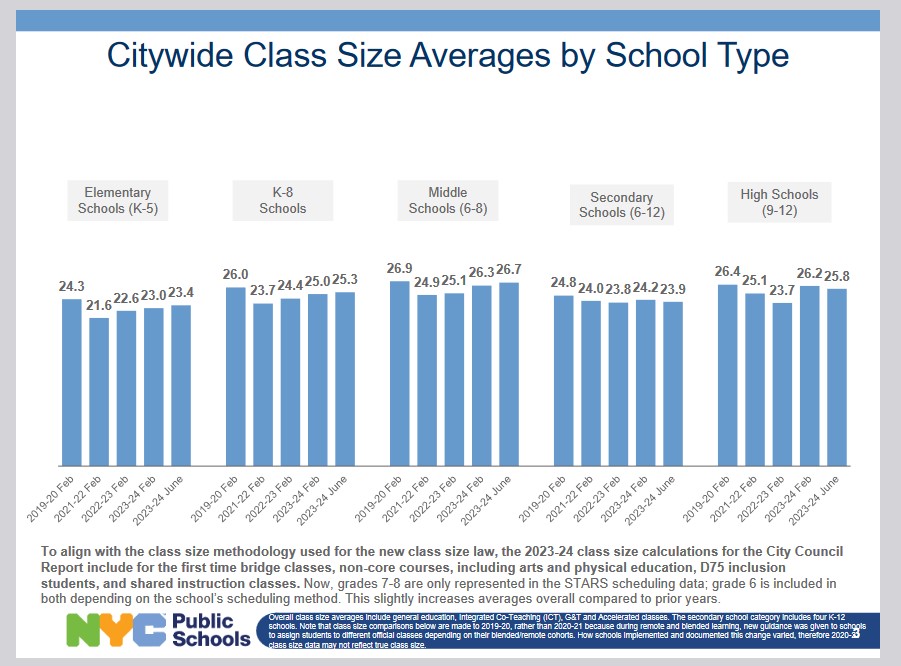Update on education budget and class sizes
July 2, 2024
1. The city budget, including for education, was approved last Sunday. The good news is that most of the Mayor’s egregious cuts were restored. But three Council Members voted no — Alexa Aviles, Shahana Hanif and Tiffany Caban –because while they said they were glad that the Council was able to prevent most of the Mayor’s cuts, they didn’t believe this budget would sufficiently move the city forward.
One piece of good news on the class size front: the Mayor did agree to add $2 billion to the proposed five-year school capital plan, as the state budget requires, which will help ensure more classroom space will be created to help schools lower class size in the most overcrowded parts of the city. However, we apparently won’t know the details until November, when the next iteration of the school capital plan is released. At that point I hope that the plan will identify all the funded projects as to district and grade level, as required by two state laws, as well as Local Law 167, and will explain how these projects will help the DOE meet the class size caps within four years. The current version of the capital plan does none of this and instead leaves 77% of funded school seats unspecified. Thank you to those of you who reached out to your Council Members about the need to expand the plan!
2. Sadly, I have been receiving emails from parents and teachers at schools that are still planning to let teachers go, including some schools that are receiving class size reduction funds. We have posted a list of more than 200 schools whose initial Galaxy budget for next year is less than their initial budget was last year at this time, which may cause them to lose teachers. There are other schools whose principals say will lose teachers, either because their total salaries have increased at a rate not covered by their budget, or for other reasons. Please ask your principal, PTA President, UFT chapter leader or other SLT member whether your school will be losing teachers, and if so why, and what the expected impact on class size will be.
And please share this information with us, which is especially important to help determine if we ask the State Education Department to require DOE to implement a corrective action plan. The city’s June financial plan still projects a loss of nearly 900 teachers next year, and nearly 3,000 over the next two years. Whether City Hall and OMB just haven’t bothered to update their financial plan is unclear, but it is more evidence that they have no coherent strategy to lower class size or comply with the law.
3.New class size data as of the end of the year was released on Sunday. It shows that as of June 15, average class sizes in elementary and middle schools had significantly increased since last fall and even more sharply since the 2021-2022 school year.

Of course, these averages don’t reveal the huge disparities in class size across schools. Our analysis shows that the percentage of classes that met the legal class size caps also significantly fell at the elementary and middle grades since the fall, with only 29.4% in grades K-3, and 30.7% in grades 4th through 8th small enough as of June 15. Altogether, in all grades the percentage of classes that met the legal caps fell slightly below 40% for the first time. That percentage, 39.8%, would be far lower, except for the anomalous fact that there are many more classes to be counted in high schools than in grades K-8. You can check out the DOE summary or your school’s class size data here.
Have a happy July 4, and talk to you soon.








